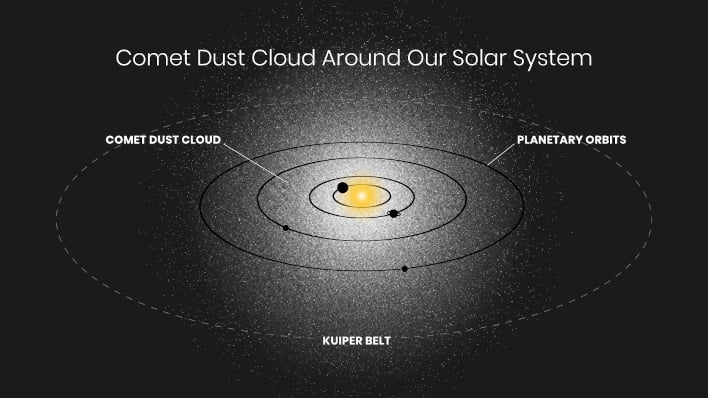Hubble Discovers A Ghostly Glow Around Our Solar System And NASA Is Spooked
While the night sky is peppered with twinkling stars and the glow of the waxing and waning Moon, the rest is simply an "inky black". In an attempt to find out just how dark the night sky truly is, astronomers made tens of thousands of measurements on about 200,000 images from Hubble in search of the answer. Project SKYSURF sought out any leftover light after subtracting the glow from stars, planets, galaxies, and zodiacal light. The small amount of light the researchers found is likened to "turning out all the lights in a shuttered room and still finding an eerie glow coming from the walls, ceiling, and floor."
Researchers say one possible explanation for the residual glow they found is that our inner solar system has a delicate sphere of dust from comets that are entering the solar system from all directions and that the eerie glow is actually sunlight reflecting off this dust. If this theory holds true, then it would be a new addition to the known architecture of the solar system.

Data from New Horizons was used by another group of researchers in 2021 to measure the sky background. The spacecraft passed by Pluto in 2015, and a small Kuiper belt object in 2018, and is currently headed into interstellar space. The measurements taken from New Horizons were taken at a distance of 4 billion to 5 billion miles from the Sun. This placed it well outside any planets and asteroids where there is no contamination from interplanetary dust.
New Horizons was able to capture a light fainter than that detected by Hubble. While there are numerous theories ranging from the decay of dark matter to a large unseen population of remote galaxies, the light remains unexplained.
"Because our measurement of residual light is higher than New Horizons we think it is a local phenomenon that is not from far outside the solar system. It may be a new element to the contents of the solar system that has been hypothesized but not quantitatively measured until now," explained Carleton.


